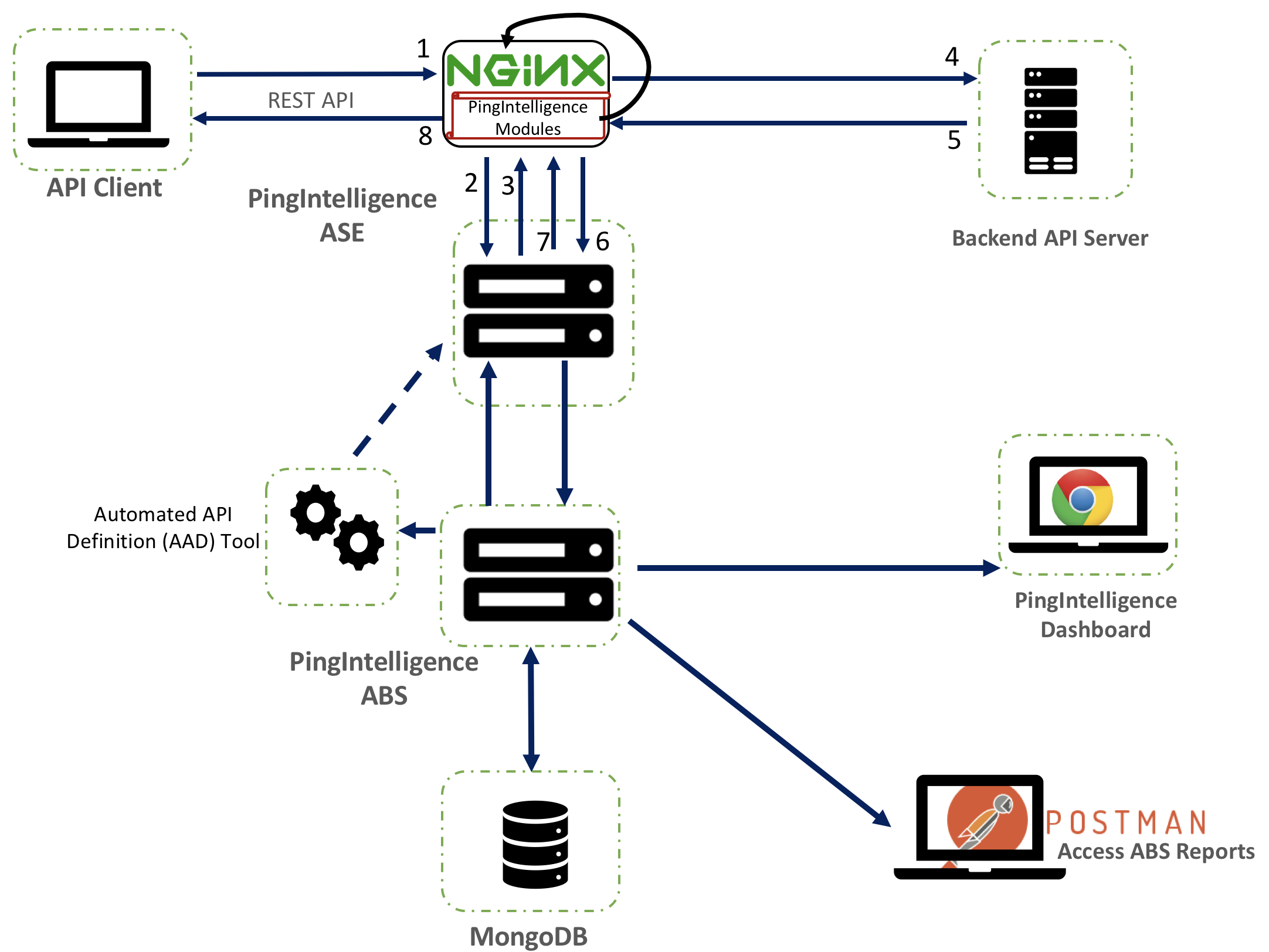NGINX sideband integration
This guide describes the deployment of PingIntelligence for APIs in a sideband configuration with NGINX.
The PingIntelligence policy modules are installed in the NGINX and pass API metadata to PingIntelligence for detailed API activity reporting and attack detection with optional client blocking.

The following is the traffic flow through NGINX and PingIntelligence for APIs components:
-
The client sends an incoming request to NGINX.
-
NGINX makes an API call to send the request metadata to ASE.
-
ASE checks the request against a registered set of APIs and looks for the origin IP, cookie, OAuth2 token, or API key in PingIntelligence AI engine-generated deny list. If all checks pass, ASE returns a
200-OKresponse to the NGINX. If not, a different response code is sent to NGINX. The request information is also logged by ASE and sent to the AI engine for processing. -
If NGINX receives a
200-OKresponse from ASE, then it forwards the request to the backend server. Otherwise, NGINX optionally blocks the client. -
The response from the backend server is received by NGINX.
-
NGINX makes a second API call to pass the response information to ASE, which sends the information to the AI engine for processing.
-
ASE receives the response information and sends a
200-OKto NGINX. -
NGINX sends the response received from the backend server to the client.